Art: Exploring Creativity and Expression
Art is a diverse range of human activities that involve creating visual, auditory, or performing artifacts (artworks), expressing the author's imaginative, conceptual ideas, or technical skill, intended to be appreciated for their beauty or emotional power.
Forms of Art
There are various forms of art, including:
- Visual Arts: Painting, drawing, sculpture, photography, printmaking, and more.
- Performing Arts: Dance, theater, music, and opera.
- Literary Arts: Poetry, prose, and drama.
- Decorative Arts: Ceramics, furniture, textiles, and jewelry.
- Media Arts: Film, television, and digital art.
Importance of Art
Art plays a crucial role in society and human development:
- Self-Expression: Art allows individuals to express their emotions, ideas, and identity.
- Cultural Expression: Art reflects the beliefs, values, and traditions of different cultures.
- Communication: Art can convey powerful messages and evoke empathy and understanding.
- Creativity: Engaging in art fosters creativity, critical thinking, and problem-solving skills.
- Historical Perspective: Art provides insights into historical and social contexts.
- Therapeutic Benefits: Art can be a therapeutic outlet for stress relief and emotional wellbeing.
Studying Art
To understand and appreciate art, students can explore the following concepts:
- Art History: Studying the evolution of artistic movements and styles.
- Elements of Art: Understanding concepts such as line, shape, form, color, texture, space, and value.
- Principles of Design: Exploring balance, contrast, emphasis, movement, pattern, rhythm, and unity.
- Artistic Techniques: Learning about various art mediums and methods of creation.
- Art Appreciation: Analyzing and interpreting artworks to understand their significance and impact.
Art Study Guide
As you study art, consider the following questions and activities:
- Research a famous artist and their notable works.
- Create your own artwork using different mediums and techniques.
- Visit art museums or galleries to observe and critique diverse artworks.
- Discuss the cultural and historical influences on a specific art movement.
- Explore the role of art in different societies and time periods.
- Reflect on how art communicates and evokes emotions and ideas.
By engaging in these activities and exploring the world of art, you can gain a deeper understanding of its significance and influence in our lives.
.◂Science Worksheets and Study Guides Third Grade. Rocks, Minerals, and soil
Study Guide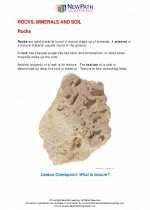 Rocks, Minerals, and soil
Rocks, Minerals, and soil  Activity Lesson
Activity Lesson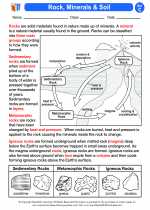 Rock, Minerals & Soil
Rock, Minerals & Soil  Worksheet/Answer key
Worksheet/Answer key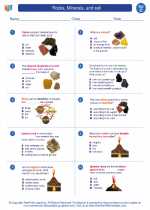 Rocks, Minerals, and soil
Rocks, Minerals, and soil  Worksheet/Answer key
Worksheet/Answer key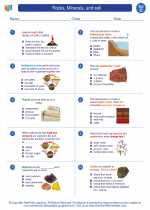 Rocks, Minerals, and soil
Rocks, Minerals, and soil  Worksheet/Answer key
Worksheet/Answer key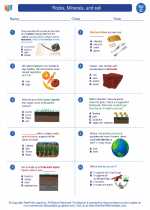 Rocks, Minerals, and soil
Rocks, Minerals, and soil  Worksheet/Answer key
Worksheet/Answer key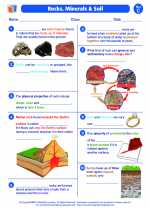 Rocks, Minerals, and soil
Rocks, Minerals, and soil  Vocabulary/Answer key
Vocabulary/Answer key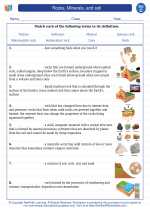 Rocks, Minerals, and soil
Rocks, Minerals, and soil  Vocabulary/Answer key
Vocabulary/Answer key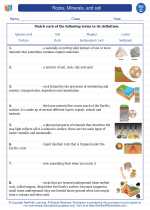 Rocks, Minerals, and soil
Rocks, Minerals, and soil 

 Activity Lesson
Activity Lesson
 Worksheet/Answer key
Worksheet/Answer key
 Worksheet/Answer key
Worksheet/Answer key
 Worksheet/Answer key
Worksheet/Answer key
 Worksheet/Answer key
Worksheet/Answer key
 Vocabulary/Answer key
Vocabulary/Answer key
 Vocabulary/Answer key
Vocabulary/Answer key

The resources above cover the following skills:
Core Ideas for Knowing Science
Earth and Space Science
The composition of the Earth and its atmosphere and the natural and human processes occurring within them shape the Earth’s surface and its climate.
The Earth and our solar system are a very small part of one of many galaxies within the Universe.
Third Grade: Focus on Systems and System Models; Structure and Function
Life Sciences: Students develop an understanding that life on Earth depends on energy from the Sun or energy from other organisms to survive.
Life Science Standards
Construct an argument from evidence that organisms are interdependent.